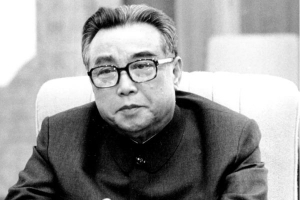Top 5 Interesting Facts about Hadrian
When discussing the Roman Empire, we often envision countless emperors, their lavish lifestyles, magnificent palaces, and great authority. But this cannot be ... read more...further than reality; practically each of them must fight to maintain or expand their control. Among several famous and infamous emperors, Hadrian stands out as a strong leader who enjoyed Greek culture. His birthplace is still up for question; some say he was born in Italy, close to Santiponce (Spain). He is renowned for having 73 miles of wall built, known as Hadrian's Wall, at the northernmost point of his empire (modern-day Britain). He was a poet who loved Greek culture while he was a student. However, he is more than just an architect. Therefore, Toplist would like to share with readers the 5 Interesting Facts about Hadrian related to his life and dynasty that you may not be aware of.
-
In 86 AD, when Hadrian was just eleven years old, both of his parents passed away, and Hadrian became an orphan.
When Hadrian's father died in 86 CE, Caelius Attianus, who eventually rose to become a praetorian prefect, and Emperor Trajan, who was Hadrian's father's cousin, were given custody of him. She was quite close to Hadrian because Trajan and his wife Pompeia Plotina had no children. He and his sister were adopted by Trajan and Publius Acilius Attianus, who subsequently served as Trajan's magistrate. At the time, Hadrian was physically active and liked to hunt. When Hadrian became emperor, it is thought that Plotina gave him guidance.
Hadrian, at 14 years old, was later transported to Rome by Trajan, who made sure he received a top-notch education. Trajan urged him to come to Rome and set up his further education in fields appropriate for a young Roman aristocracy. "Graeculus", which was meant as a light sort of parody, was given to Hadrian because of his interest in Greek literature and culture.
Although it is commonly known that Trajan respected Hadrian, historians contend that Hadrian owed Plotina a bigger obligation. She was in charge of setting up Hadrian's nuptials to Vibia Sabina, the niece of Trajan. Additionally, Plotina was the person who recognized Hadrian Trajan as the emperor's heir following the latter's demise (although Trajan spoke of Hadrian as his successor, he never made it official before he died).
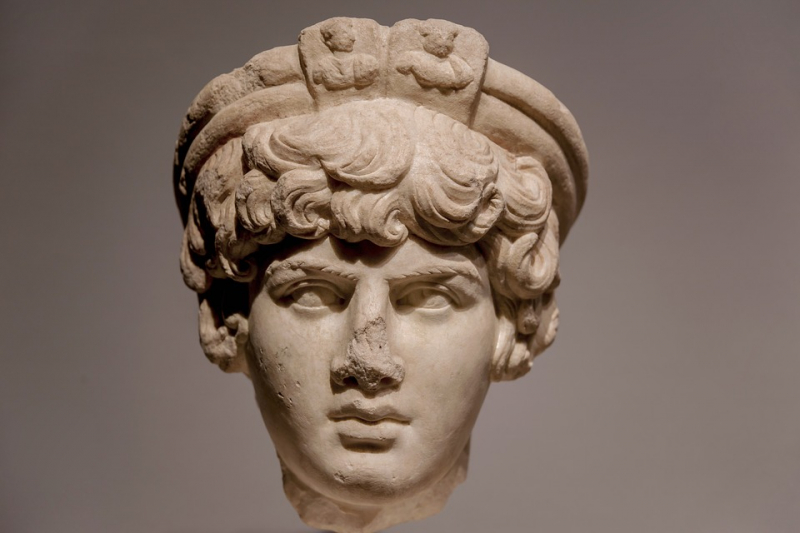
Hadrian as a child - Photo: factinate.com 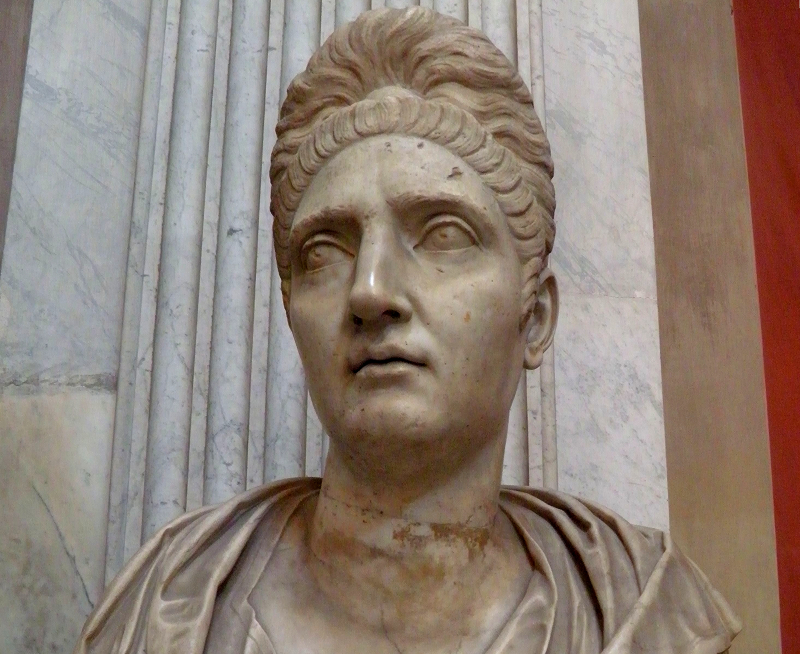
Hadrian's adoptive mother - Photo: factinate.com -
Hadrian married Vibia Sabina, Trajan's eighteen-year-old grandniece, at the time of his quaestorship, in 101. Given that the marriage would result in a scandalously bad relationship, Trajan himself appears to have had mixed feelings about it. It's possible that Plotina, the empress of Trajan, orchestrated the union. The view that the Roman Empire was a commonwealth with an underlying Hellenic culture was one that this highly educated, a powerful woman shared with Hadrian. Plotina and her extended family might continue to hold influential political positions and maintain their social standing if Hadrian were chosen as Trajan's successor. The assistance of Hadrian's mother-in-law, Salonia Matidia, a descendant of Trajan's adored sister Ulpia Marciana, was also available.
A civil war might break out if no heir is named, ushering in a chaotic, catastrophic wresting of power by a series of contending claims. An early nomination might be interpreted as a resignation, which would decrease the likelihood of a smooth transfer of power. Trajan could have legally adopted Hadrian as his heir by simply expressing his wish on his deathbed in front of witnesses while being cared for by his wife Plotina and closely watched. However, when an adoption document was eventually presented, it was signed by Plotina rather than Trajan and was dated the day after Trajan's passing. From that, Trajan's successor was Hadrian.
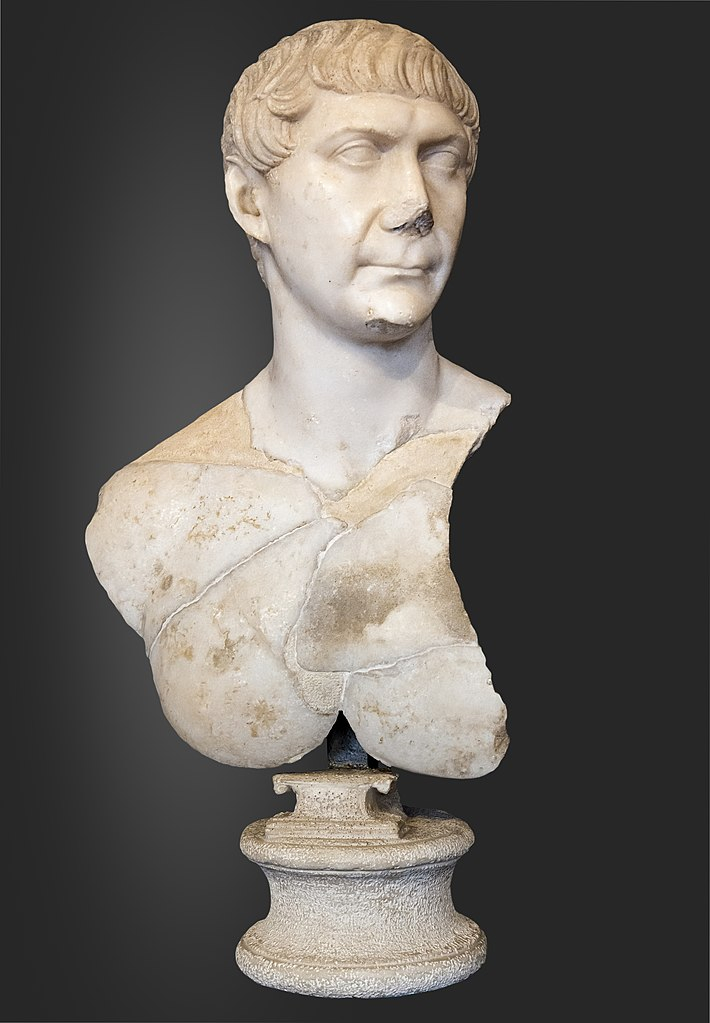
Bust of Emperor Trajan in Musée Saint-Raymond, Toulouse - Photo: commons.wikimedia.org 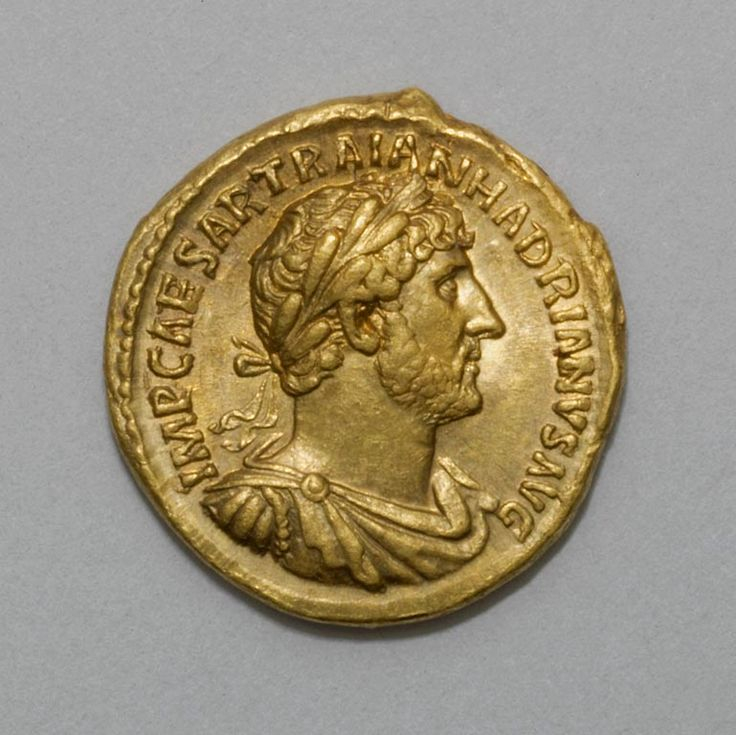
Coin depicting Hadrian the emperor - Photo: pinterest.com -
Once Hadrian became an emperor, one of the first things that Hadrian carried out was that Hadrian improve military forces. He started to regularly visit army units and checked the skills of soldiers and their ability to defend the empire. The lifestyle of the military forces was changing rapidly.
The military was no longer only concerned with protecting the empire. They built quarries, bred horses, and created and produced military attire. Hadrian instituted rigorous exercise schedules and personally inspected the forces to preserve morale and keep the soldiers from getting restless. Hadrian's doctrine was peace through power, even menace, with an emphasis on discipline, which was the theme of two monetary series, despite the fact that his coins featured militaristic imagery almost as frequently as peaceful ones. Cassius Dio enthusiastically commended this emphasis on spit and polish since he considered it as a helpful deterrent and, hence, the reason for the overall tranquil nature of Hadrian's reign. Hadrian was the one who, at the very least, formalized the use of the ethnic non-citizen warriors with specialized weaponry, such as Eastern mounted archers—in low-intensity defensive tasks like dealing with infiltrators and skirmishers.
Hadrian improve military forces because Hadrian thought that a successful and tranquil empire required the use of armed power. He emphasized how crucial strong discipline is in the military. Actually, Hadrian himself had served in the military before. Therefore, he was also able to interact with soldiers without coming across as haughty. He frequently ate lunch with the troops. Hadrianus was adored and revered by the warriors. That is the reason why there was no military insurrection under Hadrian's reign.
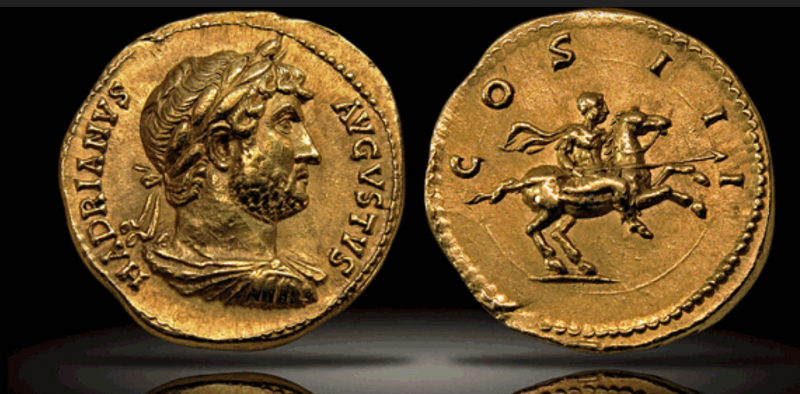
Ancient Roman Coins – Military Strength in Rome’s Golden Age - Photo: coinweek.com 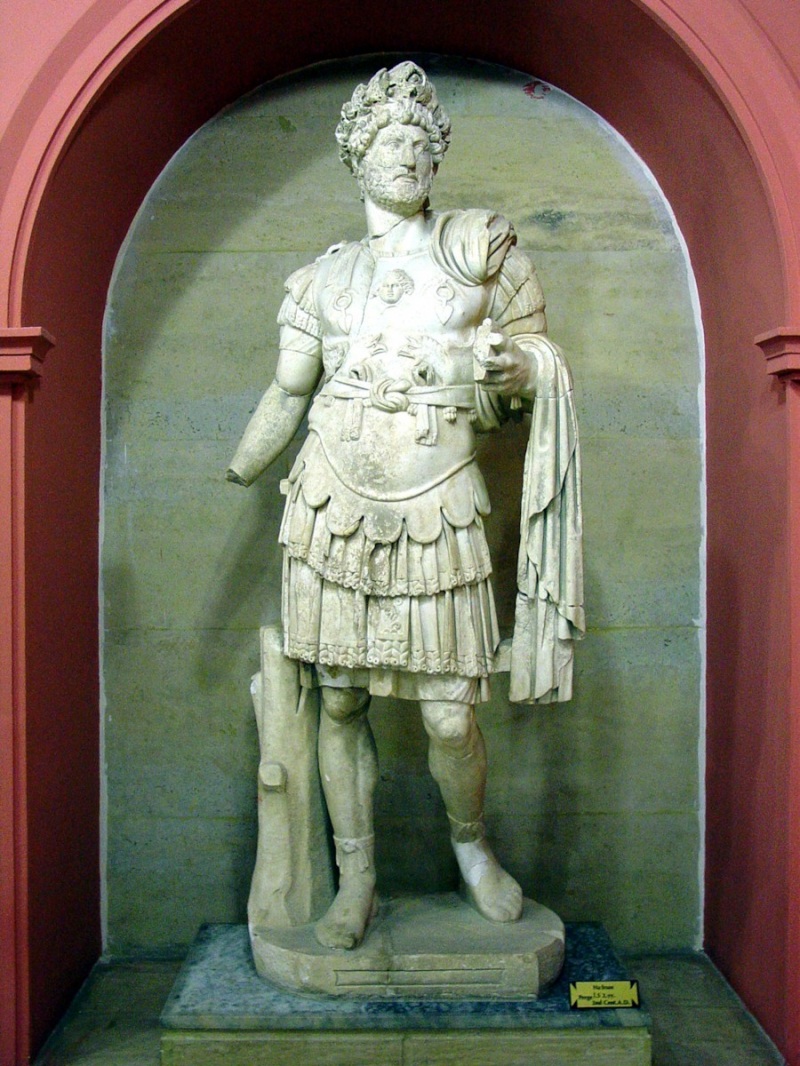
Statue of Hadrian in military garb - Photo: holylandphotos.org -
Many people may not expect Hadrian was an architect in addition to the role of an emperor. So this deserves to be listed as the 5 Interesting Facts about Hadrian.
The greatest enduring aspect of Hadrian's legacy is perhaps the large and enormous public works projects he oversaw. He constructed several structures, including the Hadrian's Wall in England, the Hadrian's Dome in Athens, and even entire towns in Asia Minor, Egypt, and Greece.
In 122, Hadrian initiated the construction of a wall called Hadrian' Wall to separate the Romans from the barbarians in England. However, the idea that the wall was built in response to a real threat or its resurgence is possible but nevertheless conjecture. In addition, the shared desire to end the extension of the empire which could be the decisive motive or to reduce the cost of defense may also play a role because the wall prevents attacks on the enemy. The Roman territory at a lower cost than a large border army, while controlling immigration and cross-border trade.
The mansion Hadrian built for himself at Tivoli, outside of Rome, is perhaps his greatest aesthetic achievement. Here, the emperor surrounded himself with magnificent recreations of his trips; via landscaping and excellent replications, he recreated the views he loved the most and was able to do so in his final years without ever leaving the Italian coast.
His interest in architecture is evident. His unusually designed structures with vaulted ceilings reflect this in their architecture. Furthermore, experts think that Hadrian was a fan of villa-style because of the unique layout and blend of curves and straight lines of his mansion. Significant alterations in the Mansion's structures were thought to be the result of adaptations necessary by Hadrian during construction rather than subsequent alterations.Hadrian's Villa (Villa Adriana) in Tivoli, Italy - Video: Eric Clark's Travel Videos Hadrian's Wall - Video: ClickView -
Because Hadrian has no children, one intriguing detail about Hadrian is that one of the most pressing issues he had to deal with was determining who would follow him as king. His marriage had not been a joyful one. Some others in that time period thought he abused his wife. Hadrian may have treated his wife Sabina a bit better than a slave, according to his contemporaries. He married Sabina because he had to, not because he was in love with her. At the behest of Plotina, the Trojan's wife, he is married to Vibia Sabina. Political considerations were the main reason that led to the marriage of Vibia Sabina, a niece of Roman Emperor Trajan, and Hadrian.
As it is common among royal families. According to them, the relationship is considered incestuous. Hadrian and Sabina are second cousins ever eliminated but not inbreeding. Therefore, Hadrian never consummated the marriage and that is why the couple did not have children. Many people believe that Hadrian has a daughter. However, that is untrue. so this is definitely one of the 5 Interesting Facts about Hadrian that readers still do not know.
In addition, his wife, Vibia Sabina died in 128. Eight years later, Hadrian recognized Lucius Caesar as the rightful successor to the throne and adopted him. Sadly, Lucius passed away before Hadrian. Therefore, Marcus Aurelius and Lucius Verus were adopted by Antoninus Pius after being adopted by Hadrian. The measure makes sure that there will always be an heir to the throne.
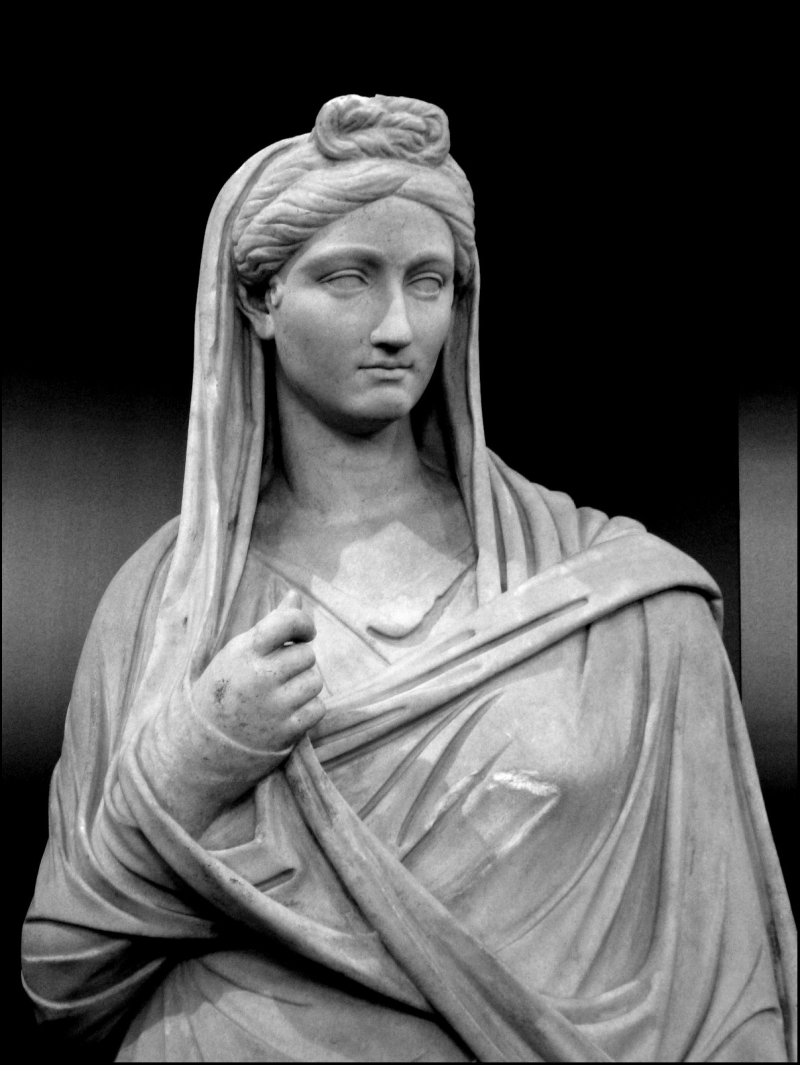
Vibia Sabina - Hadrian's wife - Photo: en.wikipedia.org 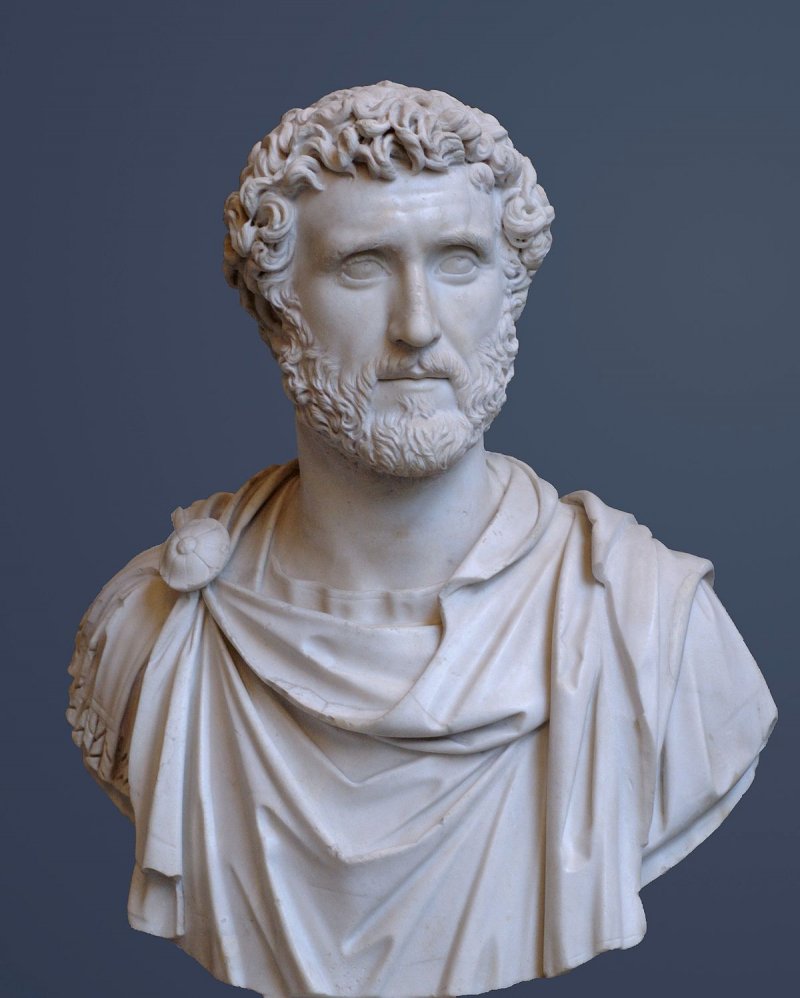
Antoninus Pius - Haddrian' adopted son - Photo: vi.wikipedia.org
















